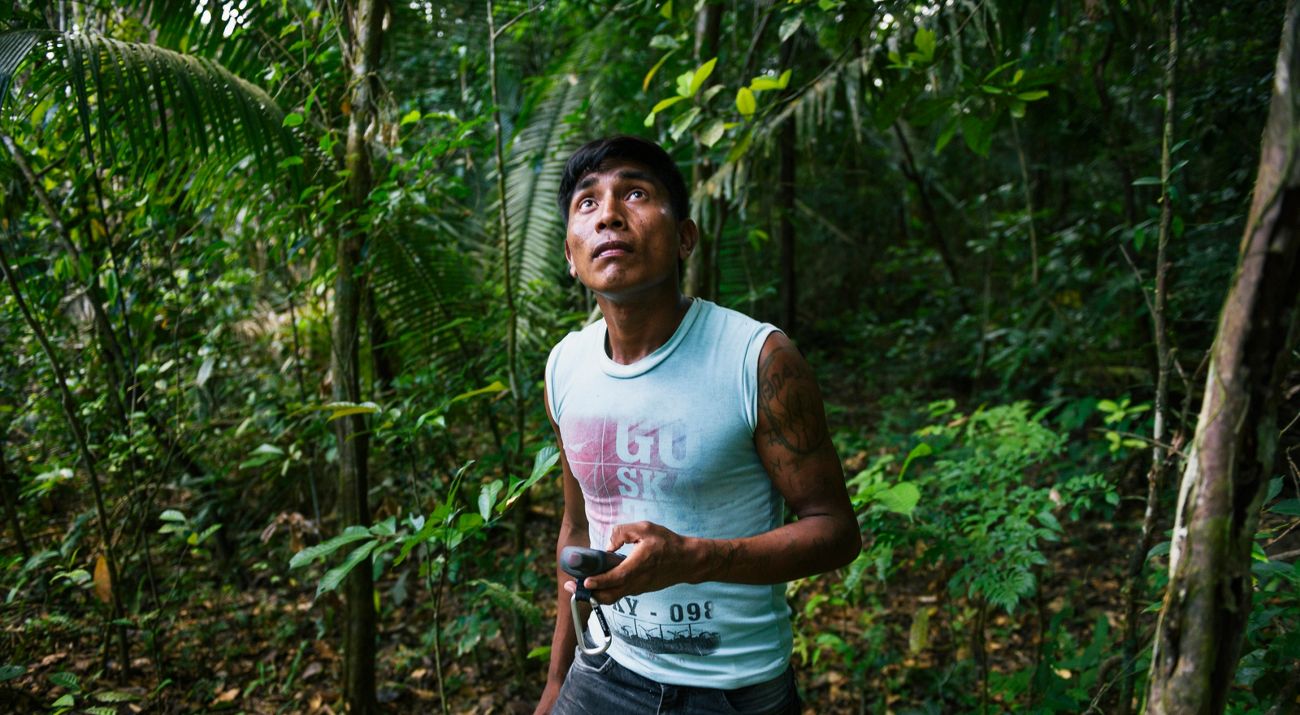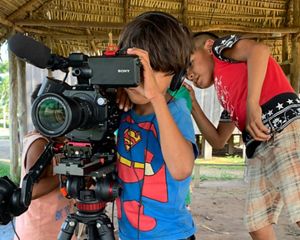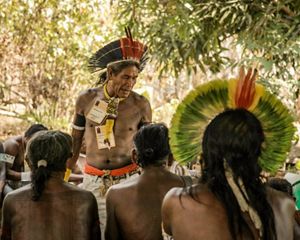Indigenous Peoples are essential to forest conservation and the bioeconomy
TNC Brazil specialists explain the importance Indigenous Lands have in protecting the environment and strengthening the tendencies of greener economy
Helcio Souza, Indigenous Peoples strategy manager, and Edenise Garcia, director of science for TNC Brazil
There are at least 305 Indigenous Peoples in Brazil, with a total population of over 800,000 people who speak more than 274 languages, according to the 2010 census of the Brazilian Institute of Geography and Statistics (IBGE). According to the National Indigenous Foundation (Funai), they inhabit 724 lands or reserves, occupying an area of 117 million hectares, which corresponds to almost 14% of the Brazilian territory, according to the National Indigenous Foundation (Funai).
More than 98% of Indigenous Lands (ILs) in Brazil are concentrated in the country's Legal Amazon region (see map below). They form large forest blocks that function as one of the main barriers to deforestation in the region. Only 2.5% of the total IL area in the Amazon has been deforested, while in regions occupied by rural properties the percentage is 52.5%.
Indigenous Lands located in municipalities that have some of the highest annual deforestation rates are like forest isles that curb land speculation and interrupt the landscape-transformation cycle that turns the largest tropical forest in the world into pastures and agricultural land. As a result, Indigenous Lands are among the best-preserved areas and have some of the highest rates of biological diversity in the Amazon, even when compared to many protected areas.
In addition, the preservation of Indigenous Lands is critical to prevent climate change since those lands contain on average about 50% more carbon per hectare than unprotected areas in the Brazilian Amazon.
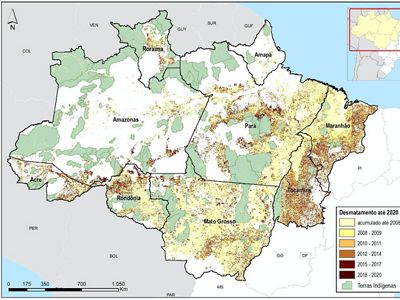
However, although most of the forests in ILs are intact, the Indigenous and traditional peoples of Brazil's Legal Amazon region currently face four distinct but interrelated sets of threats to the integrity of their lands: expansion of agriculture and livestock; development of large-scale infrastructure works; land invasions and theft of forest resources, and advancing prospecting in and around those lands.
Brazil's current administration has made dramatic changes to the direction of Indigenous Peoples' affairs in Brazil. Economic expansion in ILs is being encouraged without minimum sustainability criteria, and the effects are evident. In the past two years, annual deforestation in Indigenous Lands in the Legal Amazon region, which was at or below 20,000 hectares, has more than doubled. Forest conversion, formerly and generally linked to the opening of subsistence-plot agriculture, is expanding due to external pressures.
The effects of gold prospecting
Prospecting is one of the biggest threats to ILs: In 2020, such activities were detected in more than 11,000 hectares inside Indigenous territories or on up to 10-km buffer zones. Although in that case the impacted area is smaller than the area deforested, the environmental degradation caused by that type of activity has broad repercussions.
In the specific case of the prospecting carried out along river banks, the widespread use of mercury to isolate the gold contaminates the bodies of water and aquatic species, in addition to causing erosion and silting. As a result, even when the usually illegal prospecting takes place outside the ILs, it still affects the water security and health of Indigenous Peoples and other traditional populations downstream, in addition to the health of prospectors themselves.
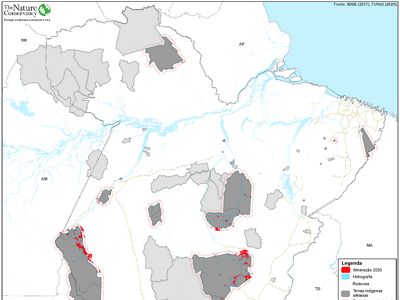
From consumption to personal hygiene and recreation, the life of local communities revolves around the waters of rivers and streams and their fish. Ingestion of mercury can cause neurological problems, resulting in tremors and loss of motor coordination, or even reduced vision. A Fiocruz Foundation study in an Indigenous Yanomami community in Amazonas state indicated that 56% of women and children had mercury levels above the safety limit established by the World Health Organization (WHO).
As if that were not enough, gold prospectors who are ever more present inside Indigenous Lands are vectors of Covid-19 among the Yanomami.
Safe Lands
Given those threats, the main solution lies in strengthening territorial management so that Indigenous Peoples and their representative organizations can: 1) conserve, 2) defend, 3) manage, 4) use, and 5) govern their lands to maintain their conservation value and promote the collective well-being of their peoples. Those five actions are the core of the National Policy for Environmental and Territorial Management on Indigenous Lands (PNGATI), created in 2012 following a comprehensive consultation process that included 150 Indigenous groups, which is today one of the most advanced public policy instruments in the country.
The basis of PNGATI is the understanding that ILs can only fulfill their conservation and livelihood functions if they are physically safe from invasions, provide food and health security for their inhabitants, and are economically viable entities. PNGATI's primary technical and administrative tool is the Territorial and Environmental Management Plan (PGTA), which Indigenous Peoples themselves must develop to reflect the specific visions of each group for their land. Currently, Indigenous Peoples have developed more than 110 PGTAs for ILs throughout Brazil.
Quote
Indigenous lands have unique elements to provide better living conditions for all of Brazilian society, not only from an environmental perspective but also from an economic one.
Indigenous lands have unique elements to provide better living conditions for all of Brazilian society, not only from an environmental perspective but also from an economic one. Traditional knowledge and indigenous socio-biodiversity have the potential to generate wealth from a range of products and services. They are even becoming the protagonists in a new premise that rational, consistent, and long-term economic development is possible through socio-bioeconomy product chains (fruits, oils, native medicinal plants, ethno-ecotourism, and others) that can provide the conditions for a new cycle of sustainable development in the Amazon.
The premise that it is possible to reconcile responsible environmental management with a new bioeconomy is based on ethno-development and respect for the rights of Indigenous Peoples. It is also a beacon that invites imagining new paths to face the sociopolitical crisis and the impacts of the pandemic we are currently experiencing.
Helcio Souza is Indigenous Peoples and Local Communities Strategy Manager at TNC Brasil
Edenise Garcia is Science Director at TNC Brasil
